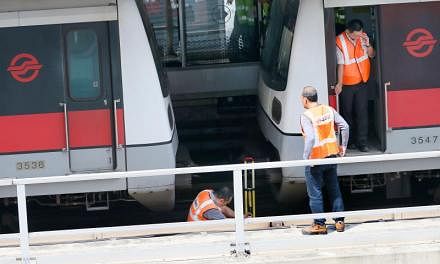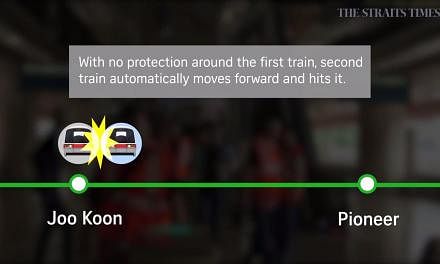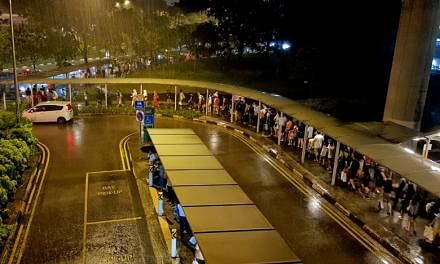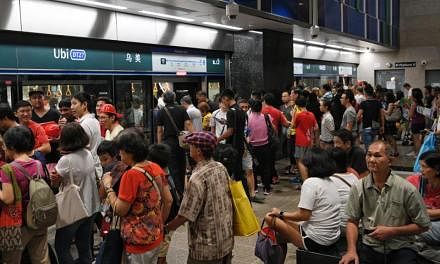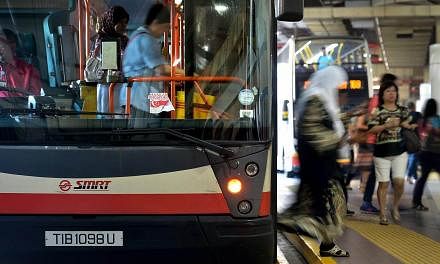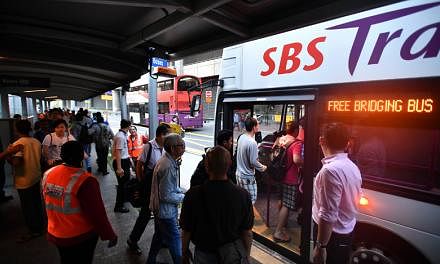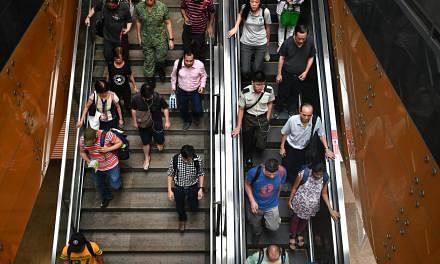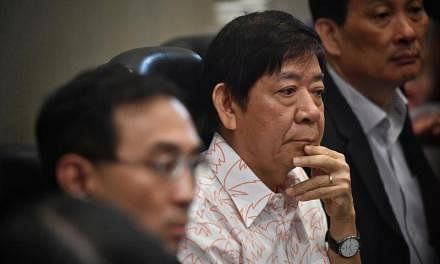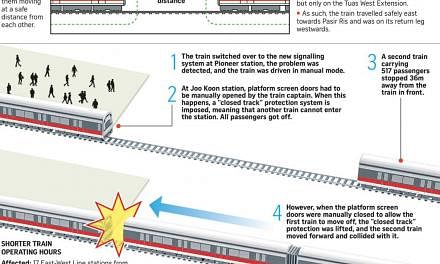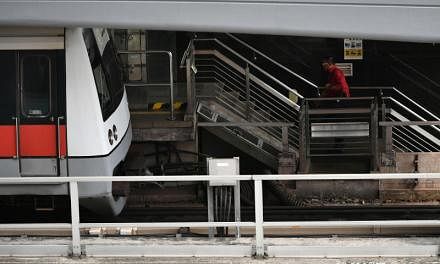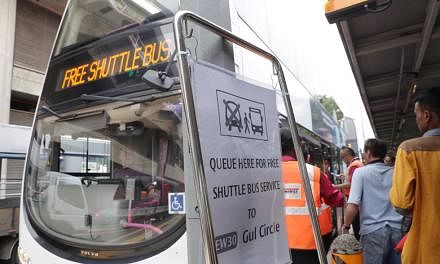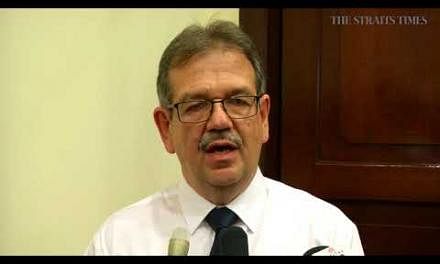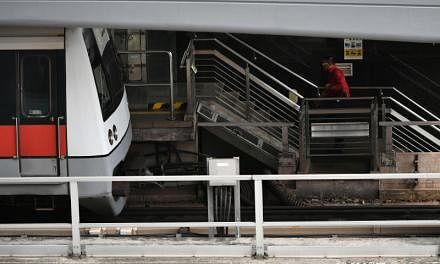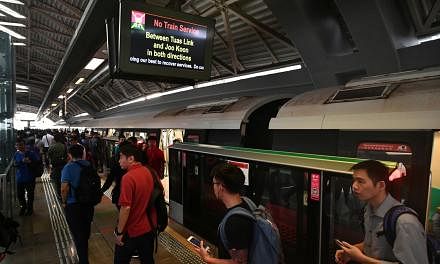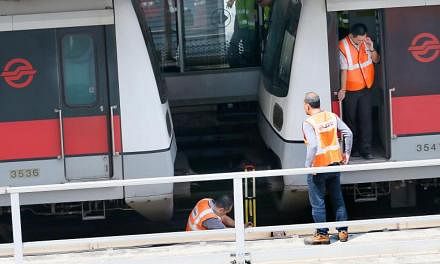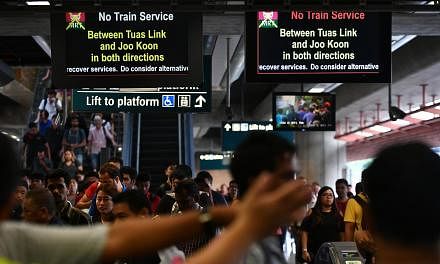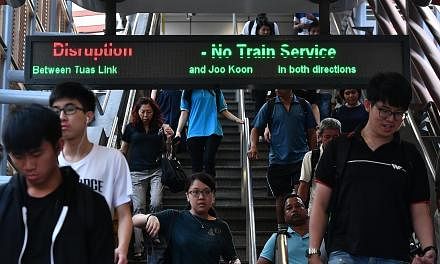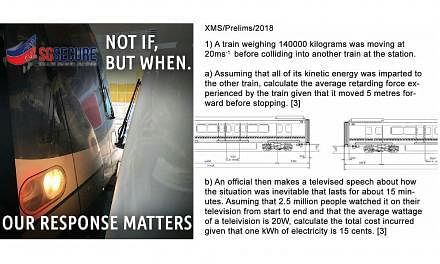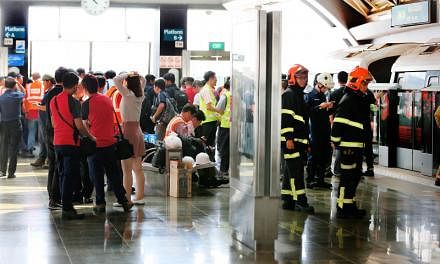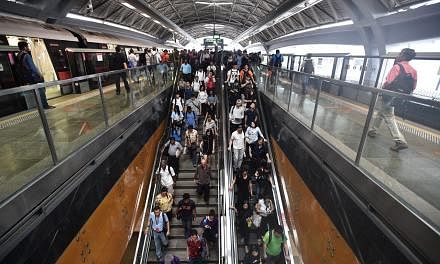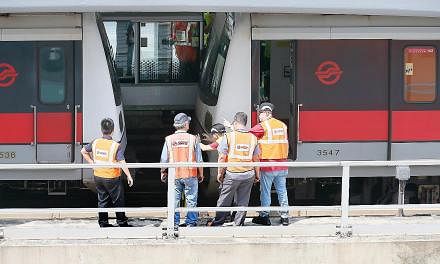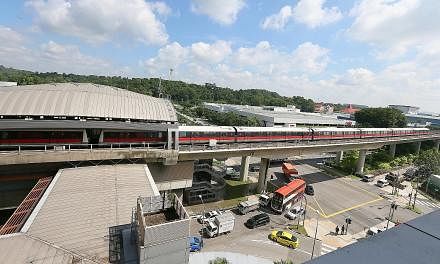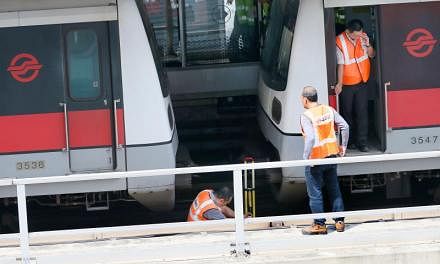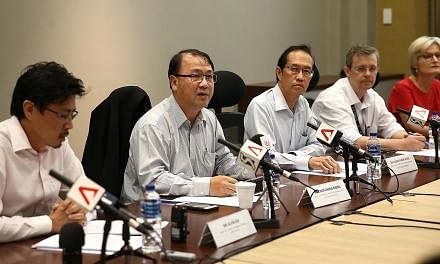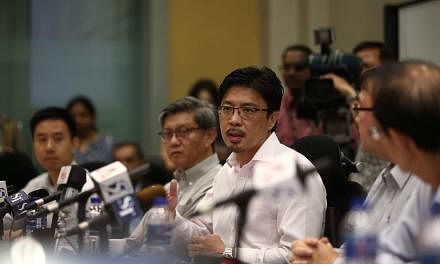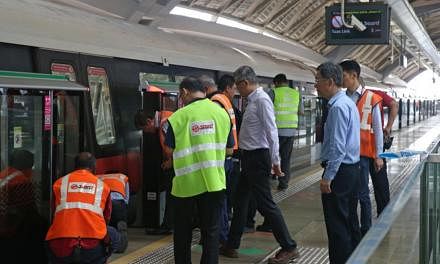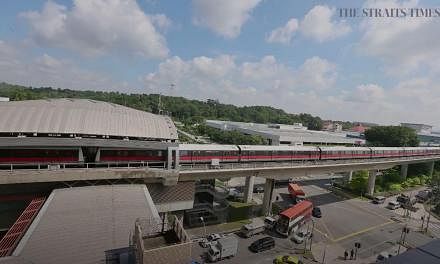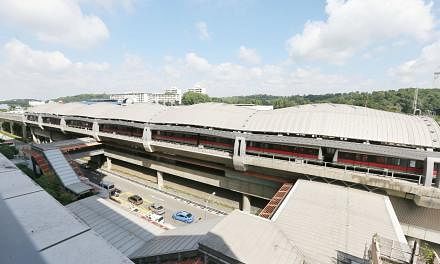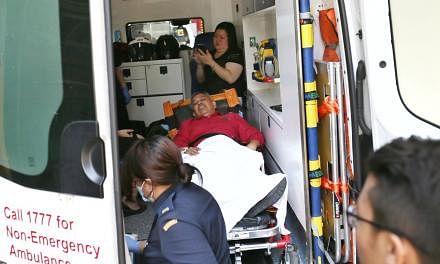Protective "bubbles" meant to keep trains at a safe distance from each other were inadvertently disabled on Nov 15 before two trains collided at Joo Koon MRT station.
French company Thales, which has taken "full responsibility" for its part in the collision, said it happened because of an "unexpected" problem in the interface between the old and new signalling systems of the East-West Line (EWL).
Officials from SMRT, Thales and the Land Transport Authority (LTA) explained how the Thales Communications-based Train Control (CBTC) system works.
On the day of the accident, the system - which allows trains to run closer together and arrive at shorter intervals, and is already in use on the North-South Line (NSL) - was running on a passive mode between Pioneer and Pasir Ris MRT stations to collect data.
At that point, trains were operated and controlled using the older 30-year-old fixed-block system.
Prior to the collision, an eastbound train, which had been launched from Ulu Pandan Depot, encountered an abnormal condition with the CBTC equipment on board. A protective bubble that helps keep trains at a safe distance from one another became disabled as a result.
LTA deputy chief executive Chua Chong Kheng said it happened because the two onboard computers experienced a loss of communication.

A second bubble which should have immediately replaced the first became unexpectedly disabled as well that day. This happened after the train passed a track circuit which had yet to be modified for the CBTC system, at Clementi.
The abnormal condition of the train's CBTC equipment was discovered at Pioneer MRT station, where a switchover to the CBTC was required. The CBTC is used to control trains between Pioneer and Tuas Link and is operational there as part of the Tuas West Extension (TWE), which opened in June.
After the CBTC problem was detected, the train was switched to be driven in manual mode to Joo Koon station. This meant the driver had to manually open the platform screen doors at Joo Koon. When the doors are opened manually, another train will not be able to enter the station. A second train with 517 passengers was then waiting 36m behind.
But when the platform screen doors were manually closed to allow the affected train to move off, the second train, which was running in automatic mode, moved forward as it could not detect any protective bubble around the first train, resulting in the collision.
Mr Alvin Kek, senior vice-president for rail operations at SMRT, said the 10 seconds before the collision was "insufficient" for the driver onboard the second train to react.
Thales said that it has conducted an "intensive exercise" to check its systems on the NSL, EWL and TWE to ensure that there will not be similar circuits removing protective bubbles from trains.

